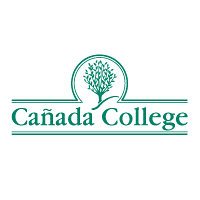It is important to take pre-emptive measures to help students avoid plagiarism. 
- Think through your policy on plagiarism. Be aware of Cañada’s policy concerning plagiarism (A statement can be found at http://canadacollege.edu/policies/academicintegrity.php).
Consider the following questions in forming your policy about written work:
- (How) Will you distinguish penalties for misuse of sources v. plagiarism? (How) Will you distinguish between drafts v. final versions?
- (How) Will you distinguish between the misuse of sources and plagiarism in your grading?
- How will you respond if it is on a group project or if it is a student who is a repeat offender?
- Be clear about your expectations: Include a definition of plagiarism and a statement of your policy on plagiarism in your syllabus.
- Have students sign an agreement concerning academic misconduct. Though not legal documents, agreements signal to students your seriousness about the subject and deflate students’ charge that your policies were not made clear to them.
- Give students the opportunity to practice paraphrasing, incorporating quotations, and citing properly. Distinguish between plagiarism and misuse of sources. Share examples with students.
- Reward proper citations and complying with all parts of the assignment in the rubric.
- Make your assignments specific: Design assignments to be very specific to course content, to synthesize ideas, to apply knowledge, and to require drafts. Require students to connect their ideas to some aspect of the class, such as a point from a lecture or class reading. Limit the range of topics to which students can respond. For example, here are some sample prompt questions that are specific and application-based:
- In what ways does this particular Impressionist painting reveal the influences of earlier movements?
- A cat jumps off the end of a table onto the floor. Describe how its vascular, muscular, skeletal and nervous systems contribute to this action.
- How does Douglass’s notion of audience change between the Narrative and his Life and Times, and how do these two texts differ as a result?
- Change assignments (even if just slightly) from semester to semester. This can discourage students from using previous students’ work.
- Review students’ sources. Require that students use local sources—pamphlets, local newspapers and journals, flyers, interviews, etc. Review the bibliography in advance and require that students turn in part or all of print sources with the final draft
- Use (short) in-class writing assignments: These give instructors with opportunities to:
- become familiar with and assess students’ abilities and styles early on so that sudden changes in their writing are more noticeable
- give students a chance to write extemporaneously, when they cannot become tempted by or mired in others’ words
- practice using sources: consider asking students to summarize, paraphrase, and/or respond to a source and how each source fits with the student’s paper topic.
- Use technology to help you. Have students submit all their papers to an on-line plagiarism detection site such as Turnitit.com. Inform students you will randomly submit assignment samples.
Responding to suspected cases of plagiarism.
Attributes of highly suspicious essays:
- papers that are barely “on topic”
- papers that far exceed the page requirement and/or scope of the assignment
- uneven or unusual quality of prose, style, or correctness—either poorer or better than the writer’s previous work generally or oscillating from poor to good within the paper
- unattributed quotes or bibliographies that do not match sources cited in the paper
- a student’s failure to hand in a draft (taking the consequences) but then producing, for partial credit, a final draft that has many if not all of the characteristics cited above.
Responding to individual cases. If you suspect that a student has plagiarized, you can:
- Use search engines to match text strings, such as Google or detection software/Turnitin.com
- Use online detection service to match text.
- Meet with department chair, course coordinator, or Dean to express your concerns before meeting with students.
- Follow and enforce your required policy and procedures on academic misconduct.
http://citl.indiana.edu/consultations/teaching_writing/plagiarism.php